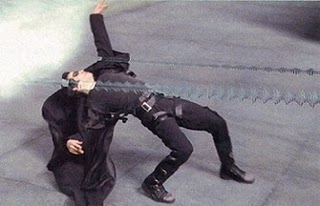Slower is faster (whether swimming or getting shot at)
/I believe very strongly that the principles which make you successful in one area can and will apply to other disciplines. This makes teaching music lessons very satisfying, because I'm sharing strategies and habits of mind that are useful beyond the instrument.
One example of a skill that is relevant in every aspect of life is learning to slow down. Slowing down leads you to reconsider saying things you'll regret in an argument. It helps you prevent injury in athletic training. Slowing down reduces your risk of death on the highway. It prevents you from spilling your coffee all over your laptop. You'll also trim the time it takes to learn a new piece of music. Slower is actually faster in the long run.
When practicing music, a slower pace/speed/tempo gives you the mental space to work on technique, expression, fingering, rhythm, and melodic accuracy all at the same time.
The right "slow" is different for everyone and might change day-to-day, regardless of what the metronome or clock says. However, using an external means of marking time can help you to slow down if you use it to pace yourself rather than push yourself.
A brutal rule of thumb: If you're still messing up, you're still going too fast. You'll know when you're going slow enough because you'll feel totally in control of everything your body is doing. It's like that scene in the Matrix where Neo can see the bullets coming at him and thus, avoid them. True slowness is mental, not necessarily physical.
For some people (regardless of age) it takes many failed attempts at a specific task before they are willing or able to dial down the tempo to what is truly comfortable. Heart rate, stress level, room temperature, distractions, and good old ego can get in the way. Slow is a feeling, and it takes practice to go inside yourself and find that quiet, calm place.
I recently took up swimming again after over a decade away from the sport. I'm in pretty good shape from walking and running, but lap swimming is a totally different physical experience. I assumed I wouldn't be very good at it at first, and I was right. But I thought if I took things slowly, I would succeed.
The first time out, at the Piedmont Park pool on Monday, I swam one lap of the crawl and then found myself huffing and puffing at the side of the pool. Another lap, and more huffing and puffing. Another lap, and I was done. I was going slowly in the macro sense - I didn't try to push myself past the point of fatigue, because there's always tomorrow. However, in the micro sense, I was basically sprinting across the pool and didn't know how to slow down.
 I consulted my favorite coach, the Internet, and learned why I was having this problem: the crawl is the fastest swim stroke! Paradoxically, if I want to learn to swim faster and better, I cannot do the crawl because it will exhaust me too quickly. I reasoned that working on slower strokes will allow me to build up endurance over the course of a few weeks, and then the crawl will not be as intense.
I consulted my favorite coach, the Internet, and learned why I was having this problem: the crawl is the fastest swim stroke! Paradoxically, if I want to learn to swim faster and better, I cannot do the crawl because it will exhaust me too quickly. I reasoned that working on slower strokes will allow me to build up endurance over the course of a few weeks, and then the crawl will not be as intense.
So, this morning I took the bus to the MLK Natatorium before dawn. I dropped into the water and swam ten laps doing the breaststroke, backstroke, and elementary backstroke. No clinging to the side huffing and puffing - I built the recovery into the swim, and it worked! Twenty minutes of continuous swimming, and, most importantly, enough mental and physical energy left to come back tomorrow and do it again.
Culturally, we are all speeded up: kids in a million activities, quick cuts in advertisements, blah blah blah. Playing music goes against that trend. It takes awhile to learn an instrument, it takes awhile to learn a given piece of music, and it takes awhile to sit in that chair and slow yourself down enough to string two notes together correctly. It is worth it. There are benefits that come from learning to slow down instead of muscling through, and they show up in unexpected places: the track, the pool, an urban roof-top showdown.
